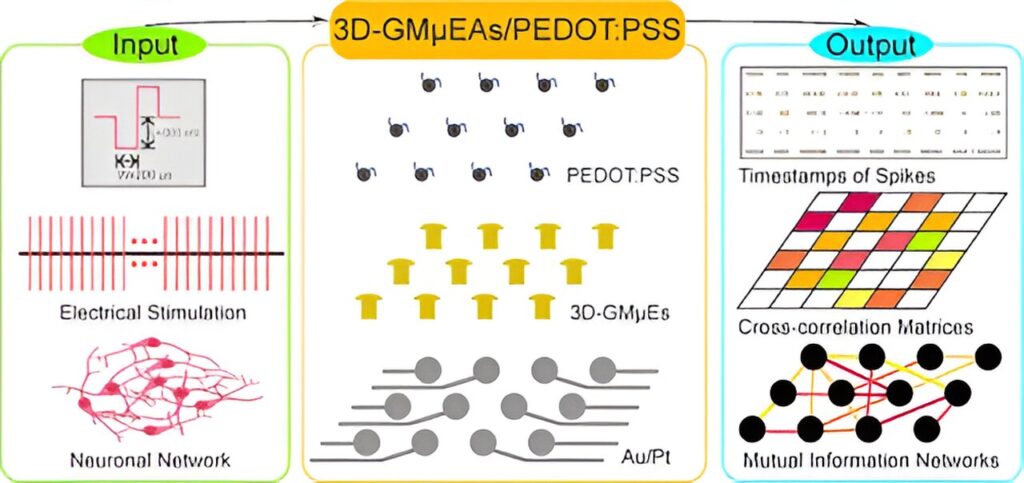Understanding the dynamics of neuronal communication is crucial for advancing neuroscience research and developing effective therapies for neurological disorders.
Neuronal network models have been valuable in neuroscience, and provide high controllability and repeatability for studying brain functions, disease mechanisms, and the impacts of neurological drugs. However, traditional two-dimensional (2D) microelectrode arrays (MEAs) used for monitoring these networks have limitations, particularly in stability and signal-to-noise ratio, which hinder long-term recordings necessary for long-term studies.
In a study published in ACS Nano, a group of scientists led by Prof. Cai Xinxia from the Aerospace Information Research Institute (AIR) of the Chinese Academy of Sciences, in collaboration with international colleagues, developed an innovative approach to investigating the dynamics of neuronal networks.
They significantly improved the ability to monitor and analyze communication within neuronal networks utilizing three-dimensional (3D) gold microelectrode arrays.
The scientists introduced a customizable, polymer-modified 3D gold microelectrode array capable of providing stable, high signal-to-noise ratio (SNR) recordings over extended periods. This innovation enables detailed exploration of cell communication within neuronal networks over extended periods, overcoming the deficiencies of planar 2D MEAs.
The 3D structure enhances electrical conductivity and biocompatibility, enabling more effective coupling with electrically active cell membranes.
The scientists applied directed spatial and temporal patterns of electrical stimulation to cultured neuronal networks, and monitored their dynamics over three weeks. By employing correlation heatmaps and mutual information networks, they quantified the networks’ synaptic-based communication and connectivity.
Analysis of synaptic delay and signal speed between cells led to the development of a communication connectivity model, revealing dynamic changes in network communication over time.
The findings of this study provide a valuable tool for future studies on neuronal network dynamics. The ability to monitor communication changes within these networks can enhance the understanding of both healthy brain function and disease mechanisms.


